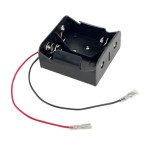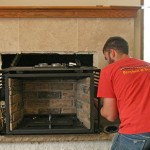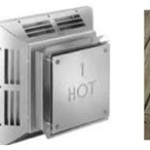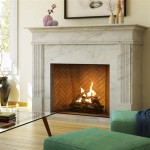Fireplace Patio Designs: Extending Living Spaces Outdoors
The allure of outdoor living has steadily increased, prompting homeowners to seek ways to seamlessly transition their interior comfort to exterior spaces. A fireplace patio design represents a sophisticated approach to achieving this goal, transforming a simple outdoor area into a captivating extension of the home. By incorporating a fireplace, the patio becomes a year-round haven, offering warmth and ambiance during cooler months and a focal point for social gatherings in warmer seasons.
Creating a successful fireplace patio design requires careful consideration of several factors, including spatial planning, material selection, and aesthetic integration with the existing landscape and architectural style. The type of fireplace chosen, whether wood-burning, gas, or electric, significantly impacts the design and functionality of the patio. Moreover, compliance with local building codes and safety regulations is paramount to ensure a safe and enjoyable outdoor experience.
The integration of a fireplace into a patio design is not merely about adding a heat source; it’s about creating an atmosphere. This atmosphere fosters relaxation, encourages conversation, and enhances the overall enjoyment of outdoor living. The crackling fire, the soft glow of embers, and the inviting warmth contribute to a sensory experience that elevates the patio from a simple outdoor space to a cherished destination.
Strategic Spatial Planning for Fireplace Integration
Effective spatial planning is the cornerstone of any successful fireplace patio design. The size and layout of the patio, along with the intended use of the space, dictate the optimal placement and dimensions of the fireplace. A common mistake is selecting a fireplace that is disproportionately large or small for the patio, which can disrupt the flow and aesthetics of the area.
Begin by assessing the existing patio space and determining the primary activities that will occur there. Will the patio be used primarily for dining, lounging, or entertaining? The answer to this question will influence the placement of furniture, walkways, and the fireplace itself. Ensure that there is ample space around the fireplace for comfortable seating and safe movement. A general rule of thumb is to allow at least six to eight feet of clearance around the fire feature.
Consider the prevailing wind direction when positioning the fireplace. Ideally, the fireplace should be oriented in a way that minimizes the impact of wind on the fire. This will prevent smoke from blowing back into the seating area and ensure a more enjoyable experience for everyone. Utilize natural windbreaks, such as hedges or walls, to further mitigate wind exposure.
Furthermore, consider the view from the patio. The fireplace should be positioned to complement the existing landscape and architectural features. Avoid placing the fireplace in a location that obstructs scenic views or creates an awkward visual imbalance. Instead, strive to create a harmonious integration of the fireplace with the surrounding environment.
The importance of traffic flow cannot be overstated. Plan pathways that allow for easy access to and from the patio, as well as around the fireplace. Avoid creating bottlenecks or obstacles that could impede movement. Clear pathways also contribute to safety, particularly when carrying food, drinks, or firewood.
Finally, account for any existing or planned utilities, such as gas lines, electrical outlets, or water lines. Gas fireplaces require a gas line connection, while electric fireplaces need a reliable power source. Ensure that these utilities are easily accessible and properly installed to avoid potential hazards.
Material Selection and Aesthetic Integration
The choice of materials plays a crucial role in the overall aesthetic appeal and durability of the fireplace patio. Select materials that complement the existing architectural style of the home and blend seamlessly with the surrounding landscape. Consider factors such as color, texture, and weather resistance when making material choices.
For the fireplace itself, common material options include brick, stone, concrete, and stucco. Brick offers a classic, timeless look and is highly durable. Stone provides a more natural, rustic aesthetic and is available in a wide range of colors and textures. Concrete is a versatile option that can be molded into various shapes and finishes. Stucco is a smooth, contemporary choice that can be easily customized with different colors and textures.
The surrounding patio surface should also be carefully considered. Common options include pavers, concrete, flagstone, and gravel. Pavers offer a wide range of design possibilities and are relatively easy to install. Concrete is a durable and cost-effective option. Flagstone provides a natural, rustic look and is ideal for creating irregular pathways. Gravel is a low-maintenance choice that can add a touch of texture and visual interest.
Pay attention to the color palette of the materials. Choose colors that complement each other and the existing landscape. Neutral colors, such as grays, browns, and beiges, tend to blend well with natural surroundings. However, don't be afraid to incorporate pops of color to add visual interest and personality to the patio.
Consider the texture of the materials as well. A combination of smooth and rough textures can create a visually appealing and tactilely interesting space. For example, a smooth concrete patio can be paired with a rough stone fireplace to create a contrasting effect. Similarly, a textured paver patio can be complemented by a smooth stucco fireplace.
Weather resistance is a critical consideration, particularly in regions with harsh climates. Choose materials that are durable and resistant to fading, cracking, and water damage. Sealants and protective coatings can be applied to further enhance the weather resistance of the materials.
Finally, consider the overall style of the patio. Do you prefer a traditional, rustic, modern, or contemporary aesthetic? The choice of materials should reflect the desired style and create a cohesive and harmonious design.
Safety Regulations and Fireplace Options
Adherence to local building codes and safety regulations is paramount when designing and installing a fireplace patio. These regulations are designed to protect homeowners and their neighbors from potential fire hazards and ensure the safe operation of the fireplace.
Before beginning any construction, obtain the necessary permits from your local building department. These permits typically require detailed plans of the patio and fireplace, including dimensions, materials, and clearances. A professional contractor can assist with the permit application process and ensure that all requirements are met.
Follow all fire safety guidelines when using the fireplace. Keep a fire extinguisher nearby and never leave a fire unattended. Ensure that all flammable materials are kept a safe distance from the fire. Regularly inspect the fireplace and chimney for any signs of damage or deterioration.
There are several types of fireplaces to choose from, each with its own advantages and disadvantages. Wood-burning fireplaces offer a traditional and authentic experience, but they require regular maintenance and can produce smoke. Gas fireplaces are more convenient and cleaner-burning, but they require a gas line connection. Electric fireplaces are the easiest to install and operate, but they may not provide the same level of heat and ambiance as wood-burning or gas fireplaces.
Wood-burning fireplaces require a chimney to vent smoke and gases away from the patio. The chimney should be properly sized and constructed to ensure adequate draft. Regular chimney cleaning is essential to prevent the buildup of creosote, a flammable substance that can cause chimney fires.
Gas fireplaces require a gas line connection, which should be installed by a qualified professional. Ensure that the gas line is properly sized and leak-tested before using the fireplace. Regular maintenance is necessary to ensure the safe operation of the gas fireplace.
Electric fireplaces are the simplest to install, requiring only a power outlet. However, it's important to ensure that the outlet is properly grounded and that the electrical system can handle the load. Electric fireplaces can be plugged into a standard outlet or hardwired into the electrical system.
Regardless of the type of fireplace chosen, prioritize safety. Install smoke detectors and carbon monoxide detectors nearby to provide early warning of any potential hazards. Educate all family members and guests on fire safety procedures and emergency protocols.
By carefully considering spatial planning, material selection, and safety regulations, homeowners can create a fireplace patio that is both beautiful and functional. This outdoor space enhances their lifestyle, provides a gathering place for friends and family, and increases the value of their property.

30 Outdoor Fireplace Ideas Cozy Fireplaces

Outdoor Fireplace Ideas The Home Depot

Outdoor Fireplace Design Ideas Getting Cozy With 10 Designs Unilock

Five Fabulous Outdoor Fireplace Ideas Coogans Landscape Design

53 Most Amazing Outdoor Fireplace Designs Ever
:max_bytes(150000):strip_icc()/bring-holidays-outside-x-50f80e4865984b36b603a1de82d2938b.jpg?strip=all)
23 Outdoor Fireplace Ideas For A Glowing Retreat

Outdoor Fireplace Design Secrets From An Expert

How To Build An Outdoor Fireplace Step By Guide Buildwithroman

30 Outdoor Fireplace Ideas Cozy Fireplaces

Outdoor Fireplace Ideas S
Related Posts








